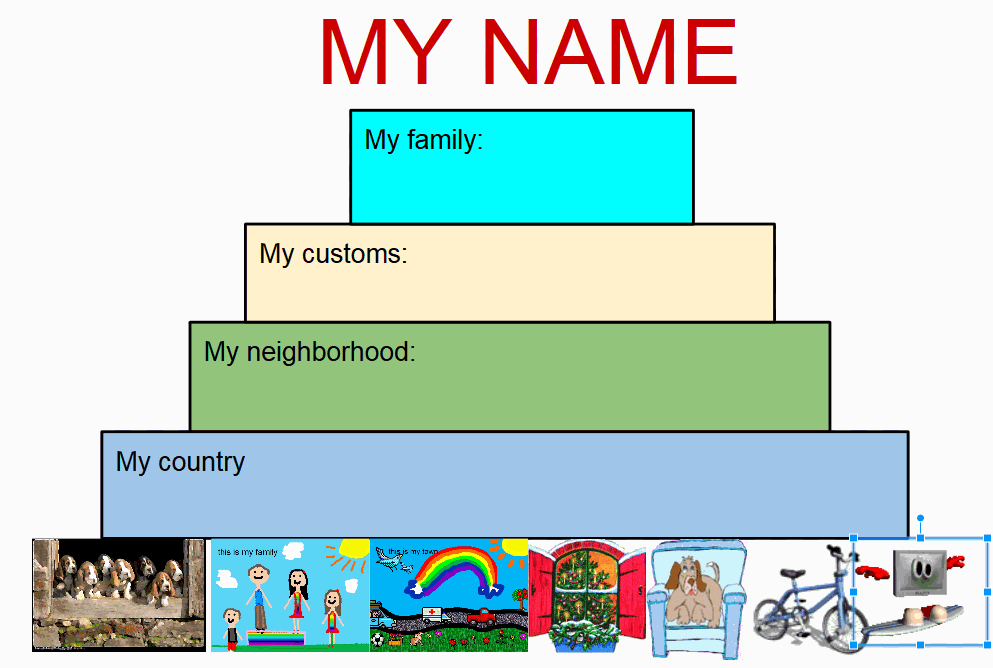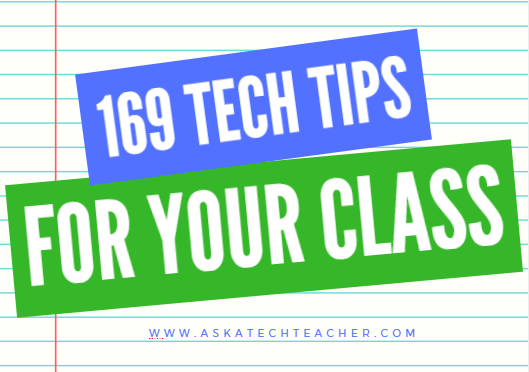Year: 2017
169 Tech Tip #74–What’s My IP Address
 In these 169 tech-centric situations, you get an overview of pedagogy—the tech topics most important to your teaching—as well as practical strategies to address most classroom tech situations, how to scaffold these to learning, and where they provide the subtext to daily tech-infused education.
In these 169 tech-centric situations, you get an overview of pedagogy—the tech topics most important to your teaching—as well as practical strategies to address most classroom tech situations, how to scaffold these to learning, and where they provide the subtext to daily tech-infused education.
Today’s tip: #74–What’s My IP Address?
Category: CLASSROOM MANAGEMENT
Sub-category: Security, Internet
Q: I need my computer’s IP address, but I don’t know where to find it. Help!
A: Let’s start with why you might need your IP address. Here are a few reasons:
- Your Web hosting company needs it to troubleshoot your internet connection or an email problem.
- You fear your computer has been hacked so want to know where it last was accessed.
- You need to link your printer (or another digital device) to your computer.
- You need to verify legitimacy for an online company you work with.
There are lots of places online that provide your IP address for free. Here’s one: My IP Address.com.
Share this:
10 Reasons Why Videos are Great Educational Tools
 I’ve written a lot lately about the benefits of using videos in your classroom. Guest author, Emily Clearly over at mysimpleshow has ten more reasons why videos are a great educational tool for your teaching:
I’ve written a lot lately about the benefits of using videos in your classroom. Guest author, Emily Clearly over at mysimpleshow has ten more reasons why videos are a great educational tool for your teaching:
***
Videos are in line with the technological times and can be accessed on the Internet at any point, from wherever you are in the world. Education is something that will never go out of style. Why not put the two together?
There are plenty of reasons why videos are great educational tools, and there are many tools on the web to help provide you with video content. You can hire professionals to create videos for you if your budget allows. Video hosting sites like YouTube, Wistia, and Vimeo offer endless options for pre-curated content. Although they are helpful, sometimes these sites can be over-saturated with content. That’s where video creation tools like mysimpleshow come in (see the sample video created below, using mysimpleshow). The tool is great for creating more tailored and personal content, and you end up with a professional quality explainer video in no time, and without budget! It’s simple, and adding videos to lessons really engages the learner.
If you’re not a believer in video and need some convincing, or you’re still slowly hopping on the bandwagon, here are 10 reasons why educators should be using video inside and outside of the classroom.
Share this:
How to Use Google Drawings
 Google Drawings is a free, web-based drawing tool that allows users to collaborate and work together in real time to create flowcharts, organizational charts, website wireframes, mind maps, concept maps, drawings, and more. It is included in GAFE, Google Classroom, G Suite, and Google Drive (this may vary in managed domains, depending upon whether the administrator turns on access to this tool).
Google Drawings is a free, web-based drawing tool that allows users to collaborate and work together in real time to create flowcharts, organizational charts, website wireframes, mind maps, concept maps, drawings, and more. It is included in GAFE, Google Classroom, G Suite, and Google Drive (this may vary in managed domains, depending upon whether the administrator turns on access to this tool).
To use Google Drawing, here’s what you do:
- Open your Google Drive account; go to New and select Google Drawings.
- Insert shapes, lines, an image, or text with the editing tools.
- When finished, add this drawing to another Google Doc, slideshow, or spreadsheet, save it as a stand-alone file, and/or share it with others in a wide variety of methods.
There are a lot of drawing programs available — SumoPaint, KidPix, and TuxPaint to name a few. All wonderful in their own right. So why use Google Drawings instead of a tool you are already familiar with? Here are seven reasons:
- it’s collaborative
- projects are easily shared with teacher
- it can be used at home and school — and synced between the two locations
- it is minimalist — the project is easy to find in the student’s Google Drive (if they attend a Google school). No tracking it down and wondering, “What tool did I use to create this project?”
- changes or edits are easy to add — just open the project in Google Drive and edit
- project can be embedded into student digital portfolio or class gallery
- project can be downloaded as an image file, a vector graphic, or a PDF
Be aware: Each drawing program mentioned above may have some of these, but few have all. Except, of course, Google Drawings.
Here are eight projects that are perfect for Google Drawings:
Share this:
How and Why to Use Podcasts in Your Classes
A podcast is a topic-specific digital stream of audio files (in some cases, video or PDF also) that can be downloaded to a computer or a wide variety of media devices. They are funny, entertaining, educational, often short, and rarely boring. They can cover news, current events, history, or pretty much anything the creator would like. When you subscribe, each new episode is automatically downloaded to your device, to be played at your convenience. You can play the entire stream or select an individual episode.
Create your own
If you’re creating your own podcast, all you need is a digital device, a microphone, an Internet connection, and a topic you’re passionate about. The two most popular sites for creating podcasts are Audacity (for PCs) and Garageband (for Macs and mobile devices). Once the podcast is completed, it is saved (typically) as an MP3 which can be played through any program that accepts that file type such as QuickTime, Windows Media, SoundCloud, and even Google Drive.
Here are popular ways to use podcasts in your lesson plans:
Share this:
Why and How Students Can Blog
 Blogging is a popular tool used in education to not only practice writing, but reinforce collaboration, perspective taking, speaking/listening skills, and a lot more. It’s grown up from its pedestrian start as a journaling platform, where writers share daily activities and don’t stress over spelling and grammar. Look at these reasons why teachers incorporate blogging across all academic topics and lesson plans:
Blogging is a popular tool used in education to not only practice writing, but reinforce collaboration, perspective taking, speaking/listening skills, and a lot more. It’s grown up from its pedestrian start as a journaling platform, where writers share daily activities and don’t stress over spelling and grammar. Look at these reasons why teachers incorporate blogging across all academic topics and lesson plans:
Collaboration
Students collaborate by commenting on the posts of others and/or co-writing a blog themed to a particular topic, taking turns posting articles.
Developing a profile
Blog profiles–often found at the top of the sidebar–summarize what the blog will address in just a few sentences. They must be pithy, concise, and clear. This is a great way for students to think through the purpose of their blog and share it in a way suited to the task, audience, and purpose. I am constantly reworking my own as I figure out a better way to communicate the gist of what I am doing.
Share this:
169 Tech Tip #60-How to Add Shortcuts to the Desktop
 In these 169 tech-centric situations, you get an overview of pedagogy—the tech topics most important to your teaching—as well as practical strategies to address most classroom tech situations, how to scaffold these to learning, and where they provide the subtext to daily tech-infused education.
In these 169 tech-centric situations, you get an overview of pedagogy—the tech topics most important to your teaching—as well as practical strategies to address most classroom tech situations, how to scaffold these to learning, and where they provide the subtext to daily tech-infused education.
Today’s tip #60–How to Add Shortcuts to the Desktop
Category: CLASSROOM MANAGEMENT
Sub-category: PCs, Chromebooks
Q: How do I create a shortcut on my desktop so I can find programs easier?
A: On PCs, there are two ways to do that
- click the icon on the start button and drag and drop it to the desktop, OR
- right click the icon on ‘all programs’ (click start button; select ‘all programs’) and select ‘send to’, then ‘desktop (create shortcut)’
This is a great tool for students so they can easily access the programs they use most often. If students are in fourth grade or up, let them do this themselves. They’ll feel empowered and they’ll add shortcuts you didn’t consider.
Share this:
10 Websites + 4 Apps that Make Geography Fun
 One of the hardest challenges for teachers is how to engage students in core subjects such as geography. It’s about mountains and rocks and valleys that haven’t changed for thousands of years. Why is that interesting? If you aren’t a geography buff, you’re probably nodding. You know what I mean. But watch how quickly the fourteen resources below morph geography from dusty to dynamic:
One of the hardest challenges for teachers is how to engage students in core subjects such as geography. It’s about mountains and rocks and valleys that haven’t changed for thousands of years. Why is that interesting? If you aren’t a geography buff, you’re probably nodding. You know what I mean. But watch how quickly the fourteen resources below morph geography from dusty to dynamic:
2-minute Geology
2-minute Geology is a collection of two-minute videos that address the geology of locations around the world. The presenter is clever, the taping professional, and the experience mesmerizing as students are immersed in the importance of geology around the world–in just two minutes.
Continents Explained
Continents Explained is a four-minute humorous video that discusses the difficulty of defining continents on our planet (with a brief cameo from a Minecraft-like character). I came away scratching my head, wondering how the heck the experts ended up with the seven continents we all accept rather than four–or twelve. The video is engaging, energizing, and informative. This is a must for any discussion on continents.
Share this:
Subscriber Special: January
Every month, subscribers to our newsletter get a free/discounted resource to help their tech teaching.
January:
Check out our freebies!
Check out discounted discontinued items!
Share this:
169 Tech Tip #15–Save Early Save Often
 In these 169 tech-centric situations, you get an overview of pedagogy—the tech topics most important to your teaching—as well as practical strategies to address most classroom tech situations, how to scaffold these to learning, and where they provide the subtext to today’s tech-infused education.
In these 169 tech-centric situations, you get an overview of pedagogy—the tech topics most important to your teaching—as well as practical strategies to address most classroom tech situations, how to scaffold these to learning, and where they provide the subtext to today’s tech-infused education.
Today’s tip #15–Save Early Save Often
Category: CLASSROOM MANAGEMENT
Sub-category: Keyboarding, Problem-solving
Q: My computer crashes often. How do I keep from losing my work unexpectedly?
A: Saving is easier than you think. I know–you think it is easy, so what’s the deal? Have you ever lost your work because… it just disappeared–maybe a power surge, maybe you pressed the wrong button. Who knows, but hours of work evaporated. Encourage students to make it a habit to save every ten minutes.
Here’s what you do:
Share this:
How Google Docs Improves Writing
 Google Docs is a free word processing program that does 99% of everything a student will ever need to do when writing. What isn’t included as part of the Google Docs program tool can be augmented with mostly free third-party add-ons, extensions, and apps. It operates in the cloud so there’re no download foibles, pesky maintenance, or expensive yearly upgrades. The end result is a learning tool that is powerful, robust, scalable, and because it’s free, is the equitable solution to so many concerns over education’s digital divide.
Google Docs is a free word processing program that does 99% of everything a student will ever need to do when writing. What isn’t included as part of the Google Docs program tool can be augmented with mostly free third-party add-ons, extensions, and apps. It operates in the cloud so there’re no download foibles, pesky maintenance, or expensive yearly upgrades. The end result is a learning tool that is powerful, robust, scalable, and because it’s free, is the equitable solution to so many concerns over education’s digital divide.
It’s no surprise that Google Docs and its sister programs — Google Spreadsheets, Google Slideshows, Google Draw, and Google Forms — have taken education by storm, usually in a package like Google Apps for Education (GAFE) or Google Classroom. While it does have a moderate learning curve (no worse than MS Word), once traveled, teachers quickly adopt it as their own and find many reasons why this has become their favorite tool. Here are the top eleven reasons from the educators I talk to:
Always up
I’ve never had the experience of logging into Google Drive (where Google Docs live) and having it not open. On the other hand, I have often experienced that heart-stopping occurrence with MS Word when it suddenly won’t work or a Word file has become corrupted for no reason I can tell. Using Google Docs has probably added years to my life just in the lowered stress levels.








































